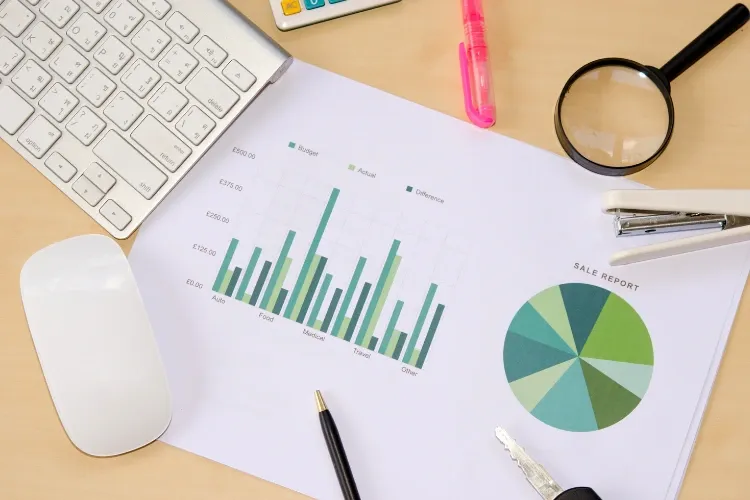Aztec Data Analysis Tutorial for Best Practice - IX Digital
Analyzing data is an essential part of any research or business, and the Aztec civilization was no exception. The Aztec data analysis tutorials used various techniques to collect and analyze data, such as tallying, using knots on a string, and using hieroglyphs to record information. In this tutorial, we will explore some of these techniques and how they can be used for data analysis in the modern world.
Aztec data analysis tutorial: Intro of Tallying
Tallying was one of the simplest methods used by the Aztecs to record data. They used a simple mark or notch to represent each item they were counting. For example, if they were counting the number of fish caught in a day, they would make a mark on a piece of wood or stone for each fish caught. At the end of the day, they would count the marks to determine the total number of fish caught.
This method is still used today in many industries, such as the food industry to count inventory or the construction industry to count materials. It is also used in scientific research to count the number of cells in a sample or the number of animals in a population.
Aztec data analysis tutorial: Intro of Knots on a String
Another method used by the Aztecs to record data was using knots on a string. They would tie knots in a specific pattern to represent different types of data. For example, they would use one type of knot to represent the number of soldiers in an army and another type of knot to represent the number of horses. The knots could be easily untied and retied, making it easy to update the data as needed.
This method is similar to modern-day bead counting, which is used to keep track of inventory or to count large numbers of items quickly. It is also used in mathematical research to study knot theory, which is the study of how knots can be classified and manipulated.
Aztec data analysis tutorial: Intro of Hieroglyphs
Hieroglyphs were a form of writing used by the Aztecs to record information. They used pictures and symbols to represent different ideas and concepts. For example, they used a symbol of a snake to represent the god Quetzalcoatl and a symbol of a sun to represent the god Huitzilopochtli. Hieroglyphs were used to record historical events, religious beliefs, and daily life.
Today, hieroglyphs are used as a form of art and decoration, but they can also be used for data analysis. By creating simple hieroglyphs to represent different types of data, you can visually represent data in a way that is easy to understand and interpret.
Aztec data analysis tutorial: Conclusion
The Aztecs were a fascinating civilization that used various methods to collect and analyze data. By studying their techniques, we can gain insight into how they viewed the world around them and how they made decisions based on the data they collected. These methods are still relevant today and can be used in various industries to collect and analyze data. Whether you're tallying inventory, using knots to count, or using hieroglyphs to represent data, the methods used by the Aztecs are a testament to the ingenuity and creativity of this ancient civilization.
Aztec data analysis tutorial: Advanced Tallying
Tallying is a simple but powerful technique used in data analysis to count the frequency of occurrence of a particular variable. It involves making a mark or notch on a piece of paper, wood, or stone to represent each item that is being counted. Tally marks are commonly used to count people, objects, or events in various fields, including science, business, and finance. In this blog post, we will explore the concept of tallying in data analysis and how it can be used to gain insights and make informed decisions.
The Basics of Tallying
Tallying is a basic method of counting that has been used for centuries, and it involves making a mark or notch for each item being counted. For example, if you want to count the number of people in a room, you can use a tally mark to represent each person. The tally mark is typically a vertical line, and every fifth mark is crossed with a diagonal line to make it easier to count.
Using tally marks is a quick and efficient way to count large amounts of data, and it's often used in situations where speed is important, such as during an inventory check or a headcount. Tallying can be done manually using paper and pen, or it can be done electronically using specialized software or tools.
Tallying in Data Analysis
In data analysis, tallying is used to count the frequency of occurrence of a particular variable. For example, if you want to know how many times a particular word or phrase appears in a text document, you can use tally marks to count the number of occurrences. By doing this, you can identify patterns and trends in the data and gain insights that can be used to make informed decisions.
Tallying is often used in statistical analysis to calculate the mean, mode, and median of a dataset. By counting the number of times each value appears in the dataset, you can calculate the mean or average value, which is a measure of central tendency. You can also identify the mode, which is the value that appears most frequently in the dataset, and the median, which is the value that lies in the middle of the dataset.
Tallying is a simple but effective method of data analysis that can be used to gain insights and make informed decisions. By counting the frequency of occurrence of a particular variable, you can identify patterns and trends in the data and make informed decisions based on the insights gained. Whether you're counting people, objects, or events, tallying is a powerful tool that can help you unlock the hidden potential of your data.
Aztec data analysis tutorial: Advanced Knots on a String
Knots on a string is a simple but powerful technique used in data analysis to visualize and represent data. It involves creating knots or loops on a string or rope to represent data points or categories, with each knot representing a different value or category. Knots on a string can be used in various fields, including science, business, and finance. In this blog post, we will explore the concept of knots on a string in data analysis and how it can be used to gain insights and make informed decisions.
The Basics of Knots on a String
Knots on a string is a basic method of data representation that has been used for centuries. It involves creating knots or loops on a string or rope to represent data points or categories, with each knot representing a different value or category. For example, if you want to represent the number of people in a room, you can tie a knot on a string for each person. The length of the string represents the total number of people, and the knots represent the individual people.
Using knots on a string is a quick and efficient way to represent data, and it's often used in situations where simplicity is important, such as during a survey or a headcount. Knots on a string can be done manually using a piece of string and knots, or it can be done electronically using specialized software or tools.
Knots on a String in Data Analysis
In data analysis, knots on a string is used to visualize and represent data points or categories. For example, if you want to represent the frequency of occurrence of a particular variable, you can tie a knot on a string for each occurrence. By doing this, you can identify patterns and trends in the data and gain insights that can be used to make informed decisions.
Knots on a string can be used to represent various types of data, such as numerical data, categorical data, and time-series data. For example, if you want to represent the sales of a product over time, you can tie a knot on a string for each month, with the length of the string representing the total sales and the knots representing the individual months.
Knots on a string is a simple but effective method of data analysis that can be used to gain insights and make informed decisions. By visualizing and representing data points or categories using knots on a string, you can identify patterns and trends in the data and make informed decisions based on the insights gained. Whether you're representing people, objects, or events, knots on a string is a powerful tool that can help you unlock the hidden potential of your data.
In conclusion, knots on a string is a simple and intuitive way to represent data in a visual and informative manner. Whether you're counting people, objects, or events, knots on a string can be a useful tool to gain insights and make informed decisions based on the patterns and trends you identify. By taking advantage of this technique, you can unlock the hidden potential of your data and discover new insights that can help drive your business or research forward.
Aztec data analysis tutorial: Advanced Hieroglyphs
Hieroglyphs, the ancient Egyptian system of writing using pictorial symbols, might seem like an unlikely source of inspiration for modern data analysis. But just as hieroglyphs conveyed complex messages in a simple and visually appealing way, data visualization techniques can transform raw data into clear, accessible, and aesthetically pleasing graphics. In this blog post, we explore the concept of hieroglyphs in data analysis and how it can be used to unlock the potential of data.
The Power of Hieroglyphs
Hieroglyphs were a versatile form of communication used by ancient Egyptians to convey complex messages in a visually appealing way. The symbols represented everything from deities and pharaohs to daily activities and natural phenomena. By combining different symbols, the Egyptians could convey sophisticated ideas with relative ease.
Data visualization techniques are like modern-day hieroglyphs. They use graphics and symbols to convey complex information in a simple and accessible way. Just as hieroglyphs allowed the Egyptians to communicate complex messages with ease, data visualization techniques allow us to unlock the potential of data by making it easier to understand and interpret.
Hieroglyphs in Data Analysis
In data analysis, hieroglyphs refer to the use of pictorial representations to convey data in a simple and visually appealing way. By using graphics, charts, and other visual tools, data can be transformed into a format that is easier to understand and interpret.
For example, suppose you are analyzing sales data for a product. Instead of presenting a table of raw numbers, you can create a graph or chart that visually represents the data. This approach makes it easier to identify trends and patterns, such as sales spikes or drops, over time.
Similarly, you can use maps, diagrams, and other visual aids to represent data related to geography, demographics, or other factors. By using hieroglyphs in this way, you can transform raw data into a visually compelling and informative representation that can help you gain insights and make informed decisions.
The Benefits of Hieroglyphs in Data Analysis
There are several benefits to using hieroglyphs in data analysis:
Easier to Understand: Hieroglyphs make it easier to understand complex data by presenting it in a visually appealing and easy-to-understand format.
More Accessible: By using visual aids, data can be made more accessible to a wider range of people, regardless of their level of technical expertise.
More Engaging: Hieroglyphs are often more engaging than tables of raw data, making it easier to maintain the interest and attention of the audience.
More Memorable: Because hieroglyphs use visual cues, they are often more memorable than text-based data representations, making it easier to recall key insights and trends.
Conclusion
Hieroglyphs may have been developed thousands of years ago, but their legacy lives on in modern data analysis. By using graphics, charts, and other visual tools to represent data, we can unlock its potential and gain insights that might otherwise have gone unnoticed. Whether you're analyzing sales data, customer behavior, or any other type of information, hieroglyphs in data analysis can help you communicate complex ideas in a simple and visually compelling way.







